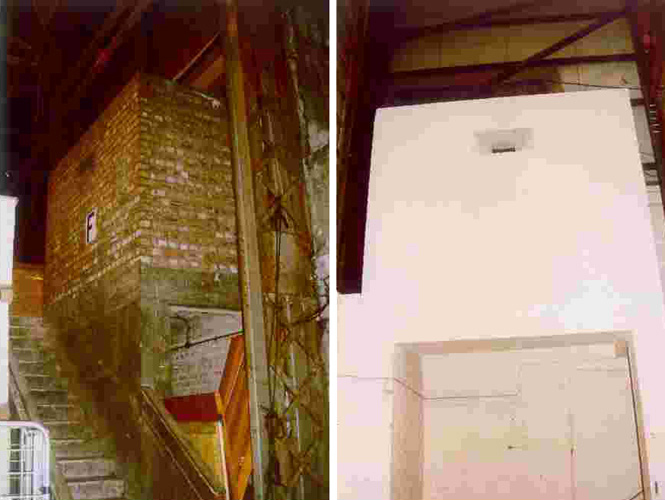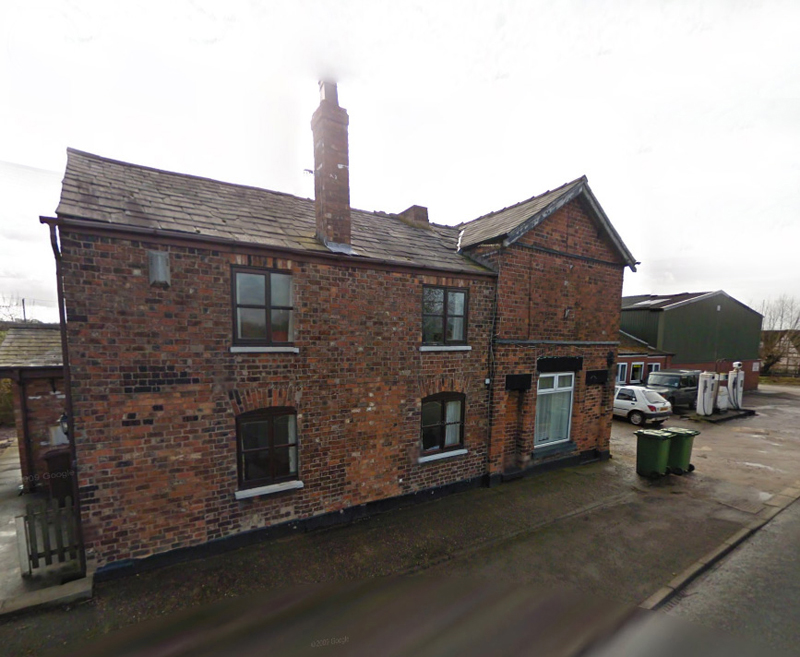
Images in this section were passed to me by a number of sources. Unfortunately most of these were embedded in old Word Perfect files at 72dpi. Unfortunately these are also largest versions of each one.































The building front right is Fire Tender House, building No.2 on the site plan
Running left to right is building No.40 - Station Offices.
You can also see the High Level Water Tanks , building No.65.
From the Chronicle Newspaper, covering the departure of the U.S. Army in 1957, a shot taken from the high level water tank (No.65 site plan) in the centre of the camp, looking back towards the main entrance.
This image is two photographs montaged together. The number on the building does not correspond to anything on the site plan, the water tower is No.65 on the site plan.
This photograph and the following one were supplied by Mr Alan Berry of Middlewich. Alan was in the A.T.C. and flew in Airspeed Oxford’s and Gliders from Cranage.
Hangar No.5 is in the centre with No.7 behind and to the left, from the high level water tank. These are listed as buildings 77 & 79 on the site plan. The fields beyond were where the runways once ran.
The buildings shown are No.62 on the plan, Motor Transport Sheds & Office. Rendered brick with sheet metal roofs, boarded under. Consisting of 7 bays, rectangular in plan with workshops to the rear. Each bay was divided by a concrete pier, and timber internal trusses braced to side walls by raking side struts.
Camp Headquarters, building No.40, during U.S. Army period.
This image, along with the following three are believed to have been originally supplied by Mr. Beeson.
29 October 2012 - From a recent e-mail from Charles Greer - “This was a new latrine and shower facility that was completed a couple of months after I arrived in Cranage. At one point I was assigned to prepare it for an inspection as the Inspector General from the 7th Army H.Q. in Germany was coming to inspect the base as part of a wider visit.”
Possibly this building is No.39, the Office and Store for O.N. Trainer.
R.H. Beeson at the M.P. Post, Cranage.
Mr Beeson served with the U.S.A.F. and was at Cranage some time between 1955 and 1957. It is thought that he passed away in March 2011.
R.H. Beeson at the U.S.A.F. Air Post Office 133, Cranage.
Building No.194, the Gymnasium.
After a recent conversation with Mr Michael Hamill, who lived at the camp when it was used as a Transit Camp, I found out that this used to be quite a beautiful building inside. Wooden floors, bars and climbing frames etc. Such a shame it was allowed to fall into this condition. The building is no longer there, though the concrete foundations can be found under the weeds and brambles.
R.A.F. Station Cranage 1950 Commanding Officer, Officers and Senior N.C.O.s
If you would like a larger version of the images , please call or e-mail me using the information on the contact page and I will arrange to send you a copy.
R.A.F. Cranage Football Team
R.A.F. Cranage Football Team
Unknown Officers from Cranage at what is thought to be a memorial ceremony for, or a burial of one of, the Cranage personnel at Byley Church.
14th Liaison Squadron 9th U.S.A.A.F.
Piper Cub of the 14th Liaison Squadron 9th U.S.A.A.F.
Piper Cub of the 14th Liaison Squadron 9th U.S.A.A.F.
No.96 Squadron CO, Squadron Leader Ronald G. Kellet DFC (centre)at Cranage, in company with pilot Officers Vlastimil Veselý (left) and Josef Kloboucnik. Kloboucnik was killed, together with his Radio Operator Sergeant Josef Klvacek, when he collided on return from night patrol with No.68 Squadron’s Beaufighter Mk.If R2099 WM-Y on 22/23 October 1941.
This appears to be near to the small wooded area just south of the main runway. It’s possible that it was on of the 36‘x16’ Huts at position No.238/9 on the site plan.
Vickers-Armstrongs Flight Shed, Byley - 1975
This photograph shows the Flight Shed used for final inspection and ‘tweaks’ of aircraft before and after initial flights. It is still in use today by a manufacturing company, again, if you do visit, ask for permission before looking round.
Vickers-Armstrongs Shadow Factory, Byley - 1966
In this photograph, taken in 1966 you can see the ‘look-out’ platforms that were position at either end of the factory. While the factory is still there today, owned and operated by Firmin Coates, the ‘two towers’ have sadly gone.
Situated to the south of the south-west corner of the airfiled, there’s still plenty to see if you take time to walk around the site. Please obtain permission before doing so. Over the road from the Flight Shed, shown above, you can clearly see the tow-path, along which they moved the Wellington aircraft, across the field to the main factory, seen in the previous photo.
These two photographs show the internal pillboxes at the former V-A factory. I’ll try to get some better photographs soon.
Just a couple of hundred yards south of the main gate, situated on the B5081 right at the edge of the airfield was Byley Stores. Seen here in the first photo from 1956 and in the next photo from 2009.
The Byley Stores building 2009
Byley Smithy (opposite Byley Stores)
October 26th, 1941. Immediately after take off, Oxford I N4954 loses height, strikes a tree and collides with the roof of an out-building at the Smithy on the B5081. Sgt Baker is instructing LAC W.C. Thompson in night flying when the accident occurs. Both men receive serious injury and are taken to hospital where, eighteen hours later, LAC Thompson passes away.
You can clearly see the repaired roof on the RHS of the Photograph
<
>
All material on the web site is covered by copyright © 2010 - 2016